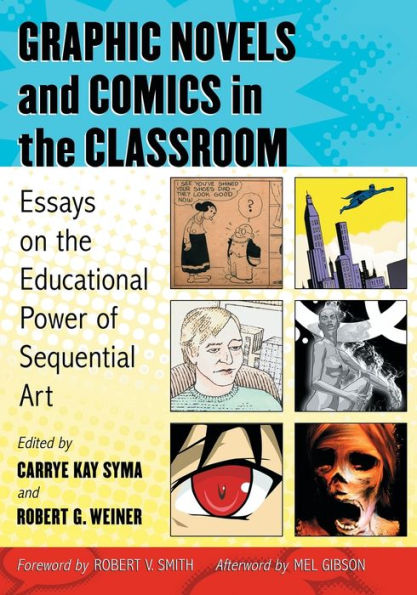Table of Contents
Table of Contents
Acknowledgments
Foreword (Robert V. Smith)
Introduction (Robert G. Weiner and Carrye Kay Syma)
Part I: Significance of Graphic Novels and Comics: Then and
Using Comics to Teach the Language Arts in the 1940s and 1950s (Carol L. Tilley)
Stigmatization, Multimodality and Metaphor: Comics in the Adult English as a Second Language Classroom (Alice Leber-Cook and Roy T. Cook)
The Attitudes of Some Students on the Use of Comics in Higher Education (Christina L. Blanch and Thalia M. Mulvihill)
Part II: Teaching Graphic Novels and Comics in the Classroom
“I can get college credit for reading Batman? That’s a joke, right?” Confessions of a Fanboy Professor Teaching Comic Books (David Whitt)
“What the—?” Pre-Service Teachers Meet and Grapple Over Graphic Novels in the Classroom (James Bucky Carter)
Teaching Intertexuality and Parody Through the Graphic “Supertext”: Martin Rowson’s The Waste Land (1990) (Kevin M. Flanagan)
Part III: Graphic Novels and Comics, Beyond the Text
“Remember, remember the fifth of November”: Using Graphic Novels to Teach Dystopian Literature (Daniel Ian Rubin)
Exploring the Art in Sequential Art: An Art Historical Approach
Teaching Comics (Abram Fox)
On Teaching Comics and Graphic Novels in the Medieval and Renaissance Classroom (Christina C. Angel)
Leagues, Evildoers and Tales of Survival: Graphic Novels and the World History Classroom (Maryanne A. Rhett)
“Indisciplinary” Teaching: Comics Studies and Research Writing Pedagogy (Phillip Troutman)
Part IV: Specific Graphic Novels and Comics and Their Application in Educational Settings
Teaching “The Auto-Graphic Novel”: Autobiographical Comics and the Ethics of Readership (Rebecca Scherr)
Teaching Theory Through Y: The Last Man (Timothy D. Arner)
Approaching Literacy Features Through the Graphic Novel Logicomix (Marianna Missiou and Yiannis Koukoulas)
Manga, the Atomic Bomb and the Challenges of Teaching Historical Atrocity: Keiji Nakazawa’s Barefoot Gen (Jeremy R. Ricketts)174
Information Comics: Risks and Pitfalls (Felix Keller and Dorothea Oechslin)
Graphic N-extbooks: A Journey Beyond Traditional Textbooks (Jeremy Short, David Ketchen and Jeff Shelstad)
Part V: Cultural Implications of Graphic Novels and Comics
Beyond Borders: Teaching Global Awareness Through the Graphic Novel (Lan Dong)
The Benefits of Writing Comics (Diana Maliszewski)
Multicultural Education Through Graphic Novels (Rebecca M. Marrall)
“So, Joss, why do you always write these strong women characters?” Using Joss Whedon’s Astonishing X-Men to Teach Feminism (Erin Hollis)
Sequential Art for Qualitative Research (Marcus B. Weaver-Hightower)
Afterword (Mel Gibson)
About the Contributors
Index



